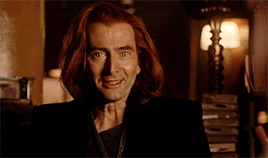I'm Not Gonna Lie, But Michael Sheen's Twitter Scares Me Sometimes
I'm not gonna lie, but Michael Sheen's Twitter scares me sometimes
More Posts from Sixerella and Others
It works both ways

Follow us on Instagram for the best content! https://www.instagram.com/realmelonmemes

... Yes, I love men over 45.
you can tell a lot about someone based on their phone background. it shows what’s most important to them
Comment from @afriend410 Made it better if you feel like wacking Snotlout with a fucking alpha dragon


#SAVAGE








Crowley smiling because of Aziraphale (requested by anonymous)
I'll take it.
Brother Francis & Nanny Ashtoreth trying to lull baby Warlock to sleep by singing Mr. Sandman in The Golden Girls style ❤️🎶✨
Good Omens ships names
Aziraphale/Crowley: Ineffable Husbands
Gabriel/Beelzebub: Ineffable Bureaucracy
Anathema/Newton: Ineffable Descendants
Hastur/Ligur: Maggot Husbands
Lucifer/Michael: Ineffable Rivals

Reblog and you’re guaranteed to be successful at whatever you do next!
How strong is Aziraphale?
Let’s estimate how heavy is the rock that Aziraphale is lifting in the garden of eden’ scene. Based on the footage we have, I will approximate its shape to a trapezoidal base prism (more specifically, its base is a trapezoid rectangle).


To discover the base measurements, I will use this scene (because is the one where he is closer to the stone, minimizing camera effects) and Mr. Sheen height (1,78m) to do some pixel measurements.


Some math later and using the fact that two edges of the rock accompanies the junction of the larger stones I managed to get the height and smaller base of the rock, but I still needed the other side and the bigger base.

For this, I measured the angle shown. With these informations and trigonometry, I concluded these are the base’s measurements. Now, for its depth (this one was hard and probably the source of possible errors), we need some considerations.


Based on other scenes from the wall, we can safely say that this stone does not represent its thickness. However, we can see the inside of the wall, which is made of three to five layers of pre cut blocks.
I am assuming, now, that Aziraphale’s stone has the depth equivalent of the first outside layer that we see, since antique stone constructions don’t use mortar and the piece could fairly “break” in that spot.
Thanks to our adorable Eve, we have a scene to make some pixel measurement using her hand as reference (an average woman hand has a length of 17,27cm) and I concluded that the stone’s length is 28cm.

Using the right volume formula, the result is V=0,03087m^3.
Now, we need to estimate its density. According to some proposed locations, the garden of eden is in southern Mesopotamia (now Iraq). Based on the book “Ancient Mesopotamian Materials and Industries: The Archaeological Evidence”-Peter Roger Stuart Moorey, the primary construction stones of this region is limestone and gypsum.
The density of limestone (the most probable one) is 2711kg/m^3, which results in a weight of 83,69kg for our little angel to lift.
To sum up, Aziraphale is lifting approximately 83,69kg (184,5 pounds) without using any knee technique and without even looking discomfortable. Maybe the buff angel we see in the storyboards is not so off, after all.
tropes i will never get tired of
fake dating
omniscient narrator who immediately contradicts the characters (“This is fine,” she said. It was, in no way, shape, or form, fine.)
deadpan jokes while swordfighting
the “I FUCKING LOVE MY WIFE” guy
oblivious pining that slowly escalates until A is going on page rants about how pretty B’s eyes are but still doesn’t seem to recognize they’re in love
Strong Leader Type having to physically fall down in order for the other characters to see how exhausted they are
funny villains who talk and make jokes with their heroes while they’re fighting them
the villains presented as the protagonists
*increasingly pulls out bigger and bigger weapons from more unlikely places*
“I said all of your weapons” *pulls out more*
“ALL OF THEM” *pulls out one last tiny dagger*
traumatized character using humor to cover up ptsd
characters going out for a break at a restaurant/movie/whatever and something bad happening
using the “*gasp* what’s that over there???” trick to avert the enemy’s attention and it working
a villain’s weakness being something totally random and nonsensical
a hero duo arguing over who’s the sidekick while fighting a villain
“don’t be silly, we don’t need [important thing]” “you lost it, didn’t you?” “yeah”
“what’s the one thing I told you not to do tonight?” “raise the dead” “and what did you do?” “raised the dead”
“I think that went pretty well” *explosion in the distance*
10 ways in which fans rewrite their favourite television shows:
1) Recontextualization - the production of vignettes, short stories, and novels that seek to fill in the gaps in broadcast narratives and suggest additional explanations for particular actions.
2) Expanding the series timeline - the production of vignettes, short stories, novels that provide background history of characters, etc., not explored in broadcast narratives or suggestions for future developments beyond the period covered by the broadcast narrative.
3) Refocalization - this occurs when fan writers move the focus of attention from the main protagonists to secondary figures. For example, female or black characters are taken from the margins of a text and given centre stage.
4) Moral realignment - a version of refocalization in which the moral order of the broadcast narrative is inverted (the villains become the good guys). In some versions the moral order remains the same but the story is now told from the point of view of the villains.
5) Genre shifting - characters from broadcast science fiction narratives, say, are relocated in the realms of romance or the Western, for example.
6) Cross-Overs - characters from one television programme are introduced into another. For example, characters from Doctor Who may appear in the same narrative as characters from Star Wars.
7) Character dislocation - characters are relocated in new narrative situations, with new names and new identities.
8) Personalization - the inserted of the writer into a version of their favourite television programme. For example, I could write a short story in which I am recruited by the Doctor to travel with him in the TARDIS on a mission to explore what has become of the Manchester United in the twenty-fourth century. (However, as Jenkins points out, many in the fan culture discourage this subgenre of fan writing.)
9) Emotional intensification - the production of what are called “hurt-comfort” stories in which favourite characters, for example, experience emotional crisis.
10) Eroticization - stories that explore the erotic side of a character’s life. Perhaps the best known of this subgenre of fan writing is “slash” fiction, so called because it depicts same-sex relationships (as in Kirk/Spock,etc.)
- Henry Jenkins Textual Poachers pg 162-177
-
 lingslutstiks liked this · 3 years ago
lingslutstiks liked this · 3 years ago -
 shirokawafachibana liked this · 3 years ago
shirokawafachibana liked this · 3 years ago -
 iamfrankscabopolis liked this · 3 years ago
iamfrankscabopolis liked this · 3 years ago -
 yiqien liked this · 4 years ago
yiqien liked this · 4 years ago -
 mercury-v liked this · 4 years ago
mercury-v liked this · 4 years ago -
 earwen-valandil liked this · 5 years ago
earwen-valandil liked this · 5 years ago -
 the-real-lordrisley liked this · 5 years ago
the-real-lordrisley liked this · 5 years ago -
 foolishhhfreak liked this · 5 years ago
foolishhhfreak liked this · 5 years ago -
 foolishhhfreak reblogged this · 5 years ago
foolishhhfreak reblogged this · 5 years ago -
 greenlikethec liked this · 5 years ago
greenlikethec liked this · 5 years ago -
 an-angry-mexican liked this · 5 years ago
an-angry-mexican liked this · 5 years ago -
 badassmayorkline reblogged this · 5 years ago
badassmayorkline reblogged this · 5 years ago -
 thatonekahootplayer liked this · 5 years ago
thatonekahootplayer liked this · 5 years ago -
 croptopcrowley reblogged this · 5 years ago
croptopcrowley reblogged this · 5 years ago -
 croptopcrowley liked this · 5 years ago
croptopcrowley liked this · 5 years ago -
 grainypicofthemoon liked this · 5 years ago
grainypicofthemoon liked this · 5 years ago -
 hello-void-how-are-ya reblogged this · 5 years ago
hello-void-how-are-ya reblogged this · 5 years ago -
 mindlessadhd liked this · 5 years ago
mindlessadhd liked this · 5 years ago -
 strawberryisles liked this · 5 years ago
strawberryisles liked this · 5 years ago -
 sixerella reblogged this · 5 years ago
sixerella reblogged this · 5 years ago -
 sixerella liked this · 5 years ago
sixerella liked this · 5 years ago -
 miistermee liked this · 5 years ago
miistermee liked this · 5 years ago -
 officialcarlsagan liked this · 5 years ago
officialcarlsagan liked this · 5 years ago -
 constantly-confused-lol liked this · 5 years ago
constantly-confused-lol liked this · 5 years ago -
 onlyhereforthefood liked this · 5 years ago
onlyhereforthefood liked this · 5 years ago -
 suriandtaal reblogged this · 5 years ago
suriandtaal reblogged this · 5 years ago -
 suriandtaal liked this · 5 years ago
suriandtaal liked this · 5 years ago -
 totaldilfiam liked this · 5 years ago
totaldilfiam liked this · 5 years ago -
 cartoon-corpse liked this · 5 years ago
cartoon-corpse liked this · 5 years ago -
 sparringtondarling liked this · 5 years ago
sparringtondarling liked this · 5 years ago -
 thedrownedgodsfool liked this · 5 years ago
thedrownedgodsfool liked this · 5 years ago -
 ineffable-wonders liked this · 5 years ago
ineffable-wonders liked this · 5 years ago -
 fandoms-unlimited666 liked this · 5 years ago
fandoms-unlimited666 liked this · 5 years ago -
 fathermulcahyofficial liked this · 5 years ago
fathermulcahyofficial liked this · 5 years ago -
 managerie76 liked this · 5 years ago
managerie76 liked this · 5 years ago -
 give-me-tea-or-give-me--death reblogged this · 5 years ago
give-me-tea-or-give-me--death reblogged this · 5 years ago -
 give-me-tea-or-give-me--death liked this · 5 years ago
give-me-tea-or-give-me--death liked this · 5 years ago -
 drunkensadbagpipes liked this · 5 years ago
drunkensadbagpipes liked this · 5 years ago -
 salz-world liked this · 5 years ago
salz-world liked this · 5 years ago -
 mariadperiad20 liked this · 5 years ago
mariadperiad20 liked this · 5 years ago -
 anonymityisbest liked this · 5 years ago
anonymityisbest liked this · 5 years ago -
 kit-kat57 liked this · 5 years ago
kit-kat57 liked this · 5 years ago -
 brokebois-blog liked this · 5 years ago
brokebois-blog liked this · 5 years ago -
 quakerlasss liked this · 5 years ago
quakerlasss liked this · 5 years ago -
 skoomy-doompy liked this · 5 years ago
skoomy-doompy liked this · 5 years ago -
 victoria-ava liked this · 5 years ago
victoria-ava liked this · 5 years ago

Hi!!! Welcome to my blog, feel free to ask me anything you like I would appreciate it, but nothing personal PLEASE!!!
78 posts